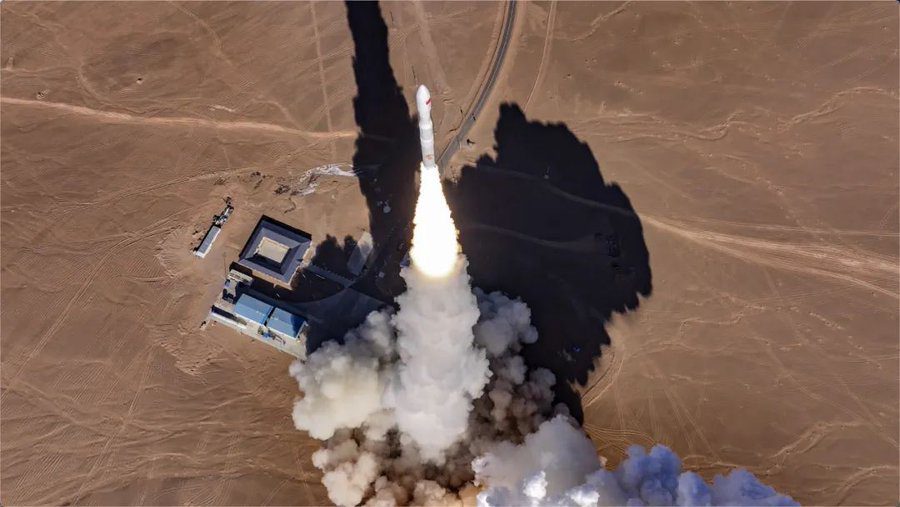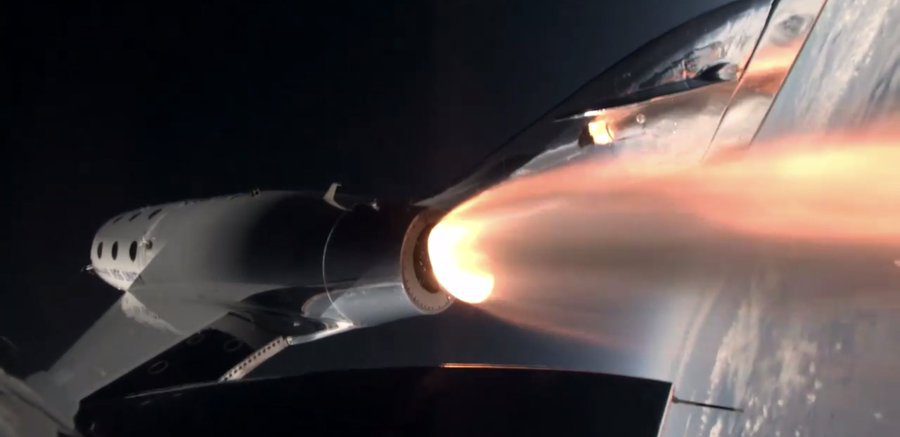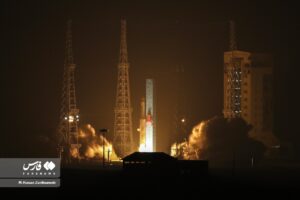The dust had barely settled from the fireworks and celebrations of the new year, before launch vehicles were being launched again.
Keep up with the latest launches in January on this page, as we will regularly update our tracker:
1 January 2024 – 03:40 GMT/UTC – PSLV-DL (flight number PSLV-C58) – ISRO |
Launched from Satish Dhawann Space Centre, Sriharikota, India with payloads:XPoSAT & PSLV Orbital Experimental Module-3 (POEM-3) on upper stage |
|
XPoSAT – an X-ray astronomy satellite (official name is X-ray Polarimeter Satellite), and a multi-experiment payload module attached to the PSLV fourth stage called PSLV Orbital Experimental Module-3 (POEM-3). XPoSAT was delivered into a 653 x 638 km orbit at 6.0 degrees inclination. The fourth stage was lowered to a 353 x 343 km orbit at 9.7 degrees inclination. |
3 January 2024 – 03:44 GMT/UTC – Falcon 9v1.2FT Block 5 – SpaceX |
Launched from Vandenberg, California, USA with payloads:Starlink Group 7-9, a total of 21 v2 Mini Starlink satellites for its second generation constellation |
|
The launch vehicle was carrying Starlink Group 7-9, a total of 21 v2 Mini Starlink satellites for its second generation constellation. Included in this number was a batch of six Starlink satellites with direct-to-cell phone connectivity. The reusable B1082 first stage, on its first flight, landed on the drone barge Of Course I Still Love You located down range in the Pacific. |
3 January 2024 – 23:04 GMT/UTC – Falcon 9v1.2FT Block 5 – SpaceX |
Launched from Cape Canaveral, Florida, USA with payloads:Ovzon-3 |
|
SpaceX launches Ovzon-3 small communications satellite to be operated by the Swedish/US firm Ovzon, over 59.7 degrees East in geostationary orbit. The satellite will raise itself from its transfer orbit to this position over the next few months using its own electric propulsion. With the satellite being relatively small and light, there was enough performance on board the rocket for the reusable B1076 Falcon 9 first stage (on its 10th flight) to be able to turn back to land back at Cape Canaveral on Landing Zone 1 (LZ-1). Read more… |
5 January 2024 – 11:20 GMT/UTC – Kuaizhou-1A – ExPace Technology Corp. (CASIC Rocket Technology Company) |
Launched from Jiuquan, China with payloads:Tianmu-1 15-18 |
|
China’s first launch of 2024 was of four Tianmu radio-occultation weather satellites of the Tianmu constellation. These satellites examine how navigation signals are affected by radio occultation due to the atmosphere from which conclusions about the atmospheric weather can be drawn. |
7 January 2024 – 22:35 GMT/UTC – Falcon 9v1.2FT Block 5 – SpaceX |
Launched from Cape Canaveral, Florida, USA with payloads:Starlink Group 6-35 (23 v2 Mini communications satellites) |
|
Second generation Starlink constellation launch. B1067 first stage (on its 16th flight) landed on the drone barge A Shortfall of Gravitas located down range in the Atlantic. |
8 January 2024 – 07:18 GMT/UTC – Vulcan-Centaur 542 – ULA |
Launched from Cape Canaveral, Florida, USA with payloads:Peregrine PM-1 lunar lander Celestis’ Enterprise Flight payload (Human ashes) |
|
Much of the media interest around the maiden flight of the Vulcan-Centaur 542 rocket concerned the Peregrine PM-1 lunar lander carried on board. If it succeeds in its later landing attempt on 23 February it will become the first US spacecraft to land on the Moon since the Apollo era over 51 years ago. Read more… |
9 January 2024 – 07:03 GMT/UTC – Long March 2C/3 (CZ-2C/3) – CALT |
Launched from Xichang Satellite Launch Center, Xichang, China with payloads:Einstein Probe (Aiyinsitan Tanzhen) |
|
Einstein Probe (Aiyinsitan Tanzhen) X-ray astronomy mission into LEO led by China Academy of Sciences (CAS) with contributions from the European Space Agency (ESA) and the Max Planck Institute for Extraterrestrial Physics (MPE) such as the Wide-field X-ray Telescope (WXT) and the Follow-up X-ray Telescope (FXT). In return for these contributions ESA will get access to 10% of the data generated. |
11 January 2024 – 03:52 GMT/UTC – Kuaizhou-1A – ExPace Technology Corp. (CASIC Rocket Technology Company) |
Launched from Jiuquan Satellite Launch Centre in northwest China’s Gobi Desert, with payloads:Tianxing-1 02 satellite |
|
The Tianxing-1 02 satellite will be used mainly for ‘space environment detection’. The craft successfully entered its pre-determined sun-synchronous orbit. |
11 January 2024 – 05:30 GMT/UTC – Gravity-1 (Yinli-1) – OrienSpace |
Launched from Defu-15002 mobile sea platform in the Yellow Sea, off the coast of Haiyang, Shandong Province, China with payloads:3 x Jilin 1 Gaofen 05 Batch 1 (Yunyao-1 [18-20]) |
|
The successful maiden flight of Gravity-1 rocket by Orienspace, a Chinese start up. Jilin-1 Gaofen 05 satellites are for Earth observation by Yunyao Yuhang, a Tianjin-based company developing a constellation to provide data for global weather forecasting. |
12 January 2024 – 04:44 GMT/UTC – H-2A202 (SRB-A3) – Mitsubishi Heavy Industries (MHI) |
Launched from Tanegashima Space Center, Japan, with payloads:IGS-Optical 8 |
|
The IGS-Optical 8 (Information Gathering Satellite) is an optical reconnaissance satellite which will reportedly be used to track North Korean military activities as well as civilian purposes, such as monitoring natural disasters. |
14 January 2024 – 08:59 GMT/UTC – Falcon 9v1.2FT Block 5 – SpaceX |
Launched from Vandenberg, California, USA with payloads:Starlink Group 7-10, a total of 22 v2 Mini Starlink satellites for its second generation constellation |
|
The launch vehicle was carrying Starlink Group 7-10, a total of 22 v2 Mini Starlink satellites for its second generation constellation. Unlike the previous Group 7 launch there were no Starlink satellites with direct-to-cell phone connectivity on board. The reusable B1061 first stage, on its 18th flight, landed on the drone barge Of Course I Still Love You located down range in the Pacific. |
15 January 2024 – 01:52 GMT/UTC – Falcon 9v1.2FT Block 5 – SpaceX |
Launched from Cape Canaveral, Florida, USA with payloads:Starlink Group 6-37, a total of 23 Starlink v2 Mini satellites |
|
In the third SpaceX launch of 2024, a group of 23 Starlink communications satellites were launched, to add to its growing Gen2 Starlink constellation. The B1073 first stage, on its 12th flight, landed on the drone barge A Shortfall of Gravitas located in the Atlantic. |
17 January 2024 – 14:27 GMT/UTC – Long March 7 (CZ-7) – China Academy of Launch Vehicle Technology (CALT) |
Launched from Wenchang Satellite Launch Centre, Hainan Island, China, with payloads:Tianzhou-7 |
|
Reportedly carrying 5,600-5,700 kg general cargo, 1,750 kg fuel, and 90 kg fresh fruit. The Tianzhou-7 freighter successfully docked with the CSS at 1746 GMT on 17 January 2024. as China’s first space station mission of the year. More than 260 items of supplies were sent to the Tiangong space station. Happily for the the astronauts, these included some surprises to celebrate the Lunar New Year. (Tianzhou-6 undocked from Tiangong Chinase space station at 0802 GMT on 12 January, dropping off the Dalian-1-Lianli small spacecraft 0643 GMT on 18 January before its re-entry at 1237 GMT on 19 January 2024.) |
18 January 2024 – 21:49 GMT/UTC – Falcon 9v2FT Block 5 – SpaceX |
Launched from Kennedy Space Center, Florida, USA, with payloads:Crew Dragon – Axiom Mission 3 (AX-3) Crew: Michael López-Alegría, Walter Villadei, Alper Gezeravcı and Marcus Wandt) |
| Axiom Mission 3 (Ax-3) commercial crew mission to the International Space Station (ISS). The first all-European commercial astronaut crew to the ISS included Alper Gezeravcı, the first Turkish astronaut. Following stage separation, Falcon 9’s first stage, B1080 on its fifth flight, landed on a landing zone at Cape Canaveral Space Force Station. |
20 January 2024 – 06:28 GMT/UTC – Qaem-100 – Iranian Revolutionary Guards Air Force |
| Launched from Sharoud Missile Test Site, Iran, carrying payload:
Suraya |
| First orbital launch success of Qaem-100 rocket. Launched into a 760 x 744 km orbit at 64.5 degrees inclination, Suraya is believed to be a small experimental communications satellite operated by Iranian Space Research Centre (ISRC). |
23 January 2024 – GMT/UTC – Lijian-1 (Kinetica-1) Flight Y3 – CAS Space |
|
Launched from Jiuquan Satellite Launch Center, China. Payloads carried: Taijing-1 03 satellite, Taijing-2 02 satellite, Taijing-2 04 satellite (Mofulong), Taijing-3 02 satellite, and Taijing-4 03 (five satellites in total) |
| The mainly technology development/experimental communications satellites were built by Beijing Micro-Nano Star Technology Co., Ltd. Taijing-4 03 satellite carries commercial Ku-band phased array radar imaging satellite using flat plate technology. Taijing-2 04 (Mofulong) has a GNSS signals occultation detection payload for weather/atmospheric research. |


Lijian-1 (Kinetica 1) Flight Y3. Courtesy: CAS Space
24 January 2024 – 00:35 GMT/UTC – Falcon 9 v1.2FT Block 5 – SpaceX |
| Launched from Vandenberg, California, USA, carrying payload:
Starlink Group 7-11 (22 v2 Mini satellites) |
| Reusable first stage B1063 on its 16th flight landed down range on the drone barge Of Course I Still Love You. Another launch for the second generation of Starlink satellites. |
26 January 2024 – 1742 GMT/UTC Drop Time – SpaceShipTwo Unity – Galactic 06 – Virgin Galactic |
|
Took off by VMS Eve carrier from Spaceport America, New Mexico at 1700 GMT/UTC with: Pilot/Commander: C J Sturckow; Co-pilot: Nicola Pecile. Passengers: Lina Borozdina-Birch; Robie C . Vaughn; Franz Haider; Neil Kornswiet, |
| Apogee achieved was 88 km. Unity is expected to be retired soon. There was no “cabin crew” trainer on this flight. Just four passengers/participants. |


Virgin Galactic’s Galactic 06 suborbital flight fires up. Courtesy: Virgin Galactic
28 January 2024 – 00:04 GMT/UTC – Simorgh (aka Safir 2A Simorgh – Basir)– Iranian Revolutionary Guards Air Force |
| Launched from Semnan, Iran, carrying payloads:
Mehda – 32 kg environmental monitoring/technology test/launcher monitoring satellite Kaihan 2 – attitude control and navigation test 3U cubesat Hatef 1 – Internet of Things comms payload test 3U cubesat. |
| Simorgh is reported to be a liquid propellant rocket. Mehda is built by Iranian Space Research Center. Hatef 1 and Kaihan 2 reported to be built by Iranian Electronics Industries Company (Sairan). Orbit is circa 1117 x 456 km at 58.7 degrees inclination. |
  Simorgh launch on 28 January 2024. Courtesy: FARS News |
29 January 2024 – 01:10 GMT/UTC – Falcon 9 v1.2FT Block 5 – SpaceX
|
| Launched from Kennedy Space Center, USA, carrying payload:
Starlink Group 5-38 (23 v2 Mini satellites) |
| Reusable first stage, B1062 on its 18th flight, landed down range on the drone barge A Shortfall of Gravitas. Another launch for the second generation of Starlink satellites. |
29 January 2024 – 05:57 GMT/UTC – Falcon 9 v1.2FT Block 5 – SpaceX |
| Launched from Vandenberg, California, USA, carrying payload:
Starlink Group 7-12 (22 v2 Mini satellites) |
| Reusable first stage B1075, on its ninth flight, landed down range on the drone barge Of Course I Still Love You. Another launch for the second generation of Starlink satellites. |
30 January 2024 – 1707 GMT/UTC – Falcon 9 v1.2FT Block 5 – SpaceX |
| Launched from Cape Canaveral, Florida, USA, carrying payload:
Cygnus NG-20 cargo resupply mission to the International Space Station (ISS) |
| The reusable first stage B1077 on its 10th flight, landed back at Landing Zone 1 (LZ-1) near to the Cape Canaveral launch site. NASA astronauts captured Cygnus cargo craft at 0959 GMT on 1 Feb 2024 using the Canadarm2 robotic arm. |
NASA astronauts captured @northropgrumman’s Cygnus cargo craft at 4:59am ET using the Canadarm2 robotic arm. Mission controllers in Houston will begin guiding Cygnus in for installation on the Unity module’s Earth-facing port at 6:30am. More… https://t.co/BPeCutuXjZ pic.twitter.com/cGSXeqcdee
— International Space Station (@Space_Station) February 1, 2024
31 January 2024 – 06:34 GMT/UTC – Electron – Rocket Lab |
| Launched from Mahia Peninsula, New Zealand, carrying payload:
Four Skylark Space Situational Awareness satellites, Northstar SSA Cluster 1-4 |
| The F43 Electron first stage splashed down in the Pacific Ocean and was successfully recovered by Rocket Lab. RocketLab hopes to reuse this if it can be refurbished. The Northstar satellites reportedly use a 16U bus built by Spire.
|
Now this is a marine asset I like! pic.twitter.com/l4P8hdLHko
— Peter Beck (@Peter_J_Beck) February 2, 2024






